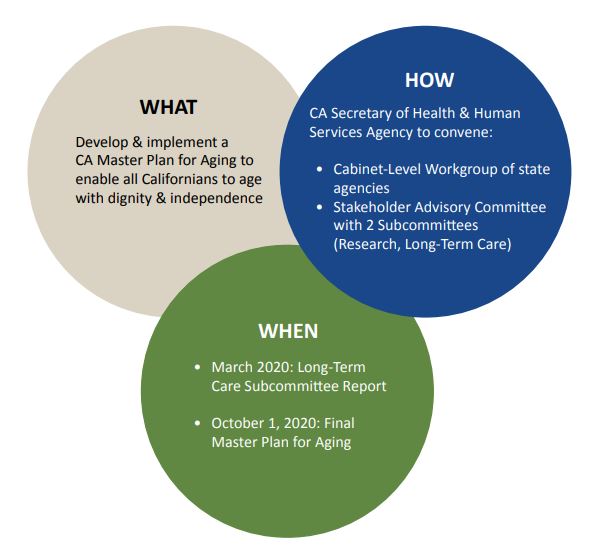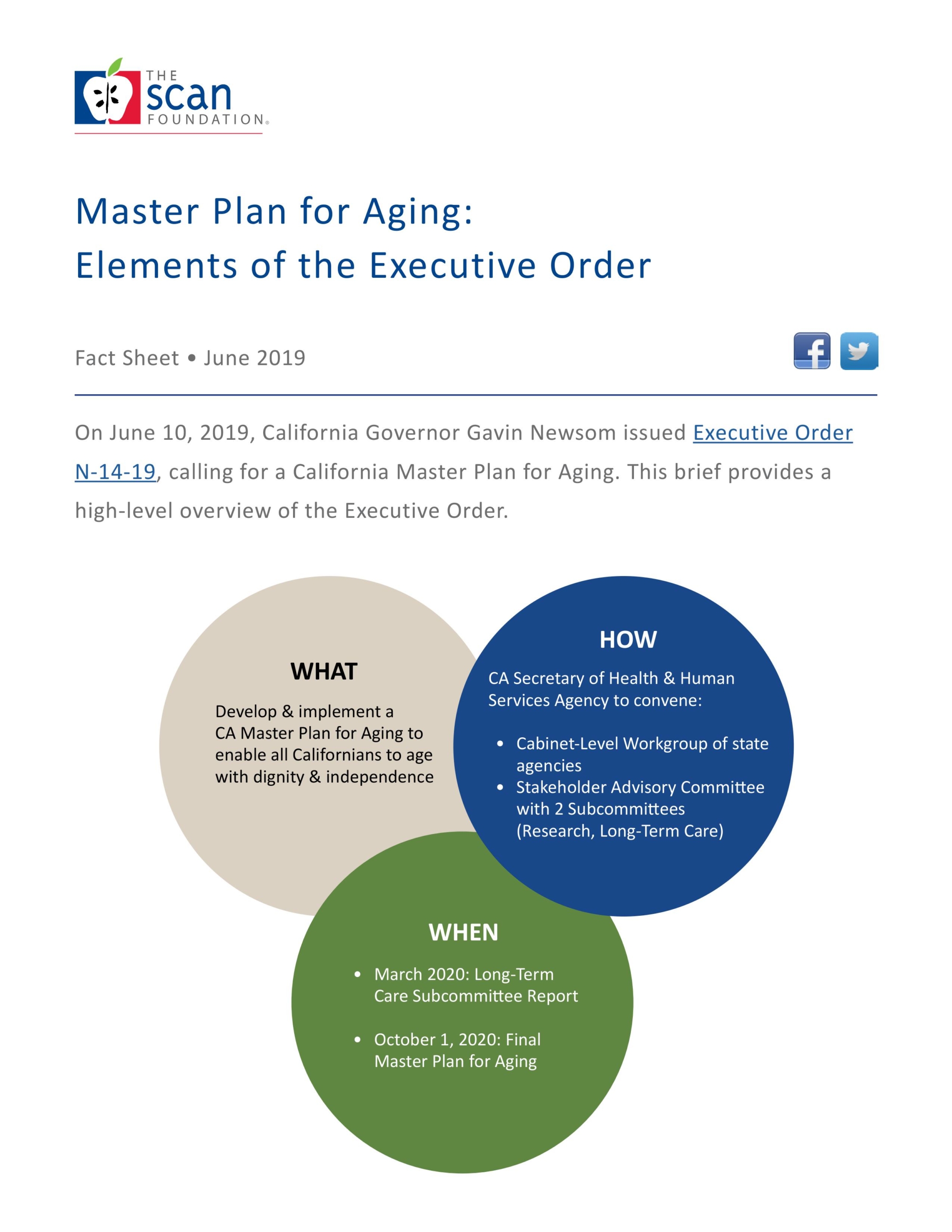California Master Plan for Aging (MPA): Elements of the Executive Order
summary
On June 10, 2019, California Governor Gavin Newsom issued Executive Order N-14-19, calling for a California Master Plan for Aging. This brief provides a high-level overview of the Executive Order.
Date Updated: 06/13/2019On June 10, 2019, California Governor Newsom issued Executive Order N-14-19, calling for a Master Plan for Aging (Master Plan).1 This brief provides a high-level overview of the Executive Order.
What: Key Issues and Priorities
The Executive Order requires this Master Plan to serve as a blueprint for state and local government, the private sector, and philanthropy to implement strategies and partnerships that promote healthy aging for all Californians and prepare the state for the coming demographic changes. It recognizes the growth, diversity, and value of California’s older population, and the critical role of caregivers, paid and unpaid. Additionally, the Executive Order identifies the need for an “age-friendly” state that supports independence and choice, highlighting California’s leadership on supporting a wide range of home- and community-based services. The Master Plan is required to include recommendations to better coordinate federal, state, and local government programs and services. It must also include key data indicators with 10-year targets to support implementation.

How: State Agency and Stakeholder Engagement
The Executive Order directs the Health and Human Services Agency Secretary to convene the following committees to advise on the development and implementation of a Master Plan:
- Cabinet-level Workgroup for Aging with representation across state agencies
- Stakeholder Advisory Committee representing a broad array of stakeholders that includes two subcommittees (Research and Long-Term Care Subcommittees)
When: Key Deliverables and Deadlines
The Executive Order directs the secretary and these committees to deliver the following items:
- March 2020: Report from the Long-Term Care Subcommittee, focusing on the growth, stability, and sustainability of the long-term care infrastructure; access to and quality of long-term care programs; system financing; and workforce capacity
- October 1, 2020: Final Master Plan submitted to the governor
Next Steps
In the coming weeks, the Newsom Administration will identify members of the various committees and will create a work plan to guide these Master Plan efforts.
Download the publication for all visuals and complete references.
Continue Reading
This policy brief provides an introduction to The SCAN Foundation’s CLASS Technical Assistance Brief Series, which explores many of the critical issues to be considered for successfully implementing CLASS.
This policy brief describes the broad needs of individuals with disability and the wide range of supportive and environmental solutions that can allow for the most independent living possible. It suggests how findings on social and environmental supports for individuals with disability can inform implementation of CLASS.
This policy brief provides background on the historical development of benefit eligibility triggers in the private long-term care insurance market. Understanding how these triggers came into being can provide important information to those charged with implementing the CLASS Plan.


